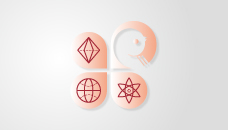CHEN Xin, ZHAO Jian-yi, WANG Zhi-hao, WANG Lei, ZHOU Ning, LIU Wen. Clearing residual resist in nanoimprint lithography by multi-mask[J]. Optics and Precision Engineering, 2013, 21(6): 1434
Search by keywords or author
- Optics and Precision Engineering
- Vol. 21, Issue 6, 1434 (2013)
Abstract

Set citation alerts for the article
Please enter your email address



